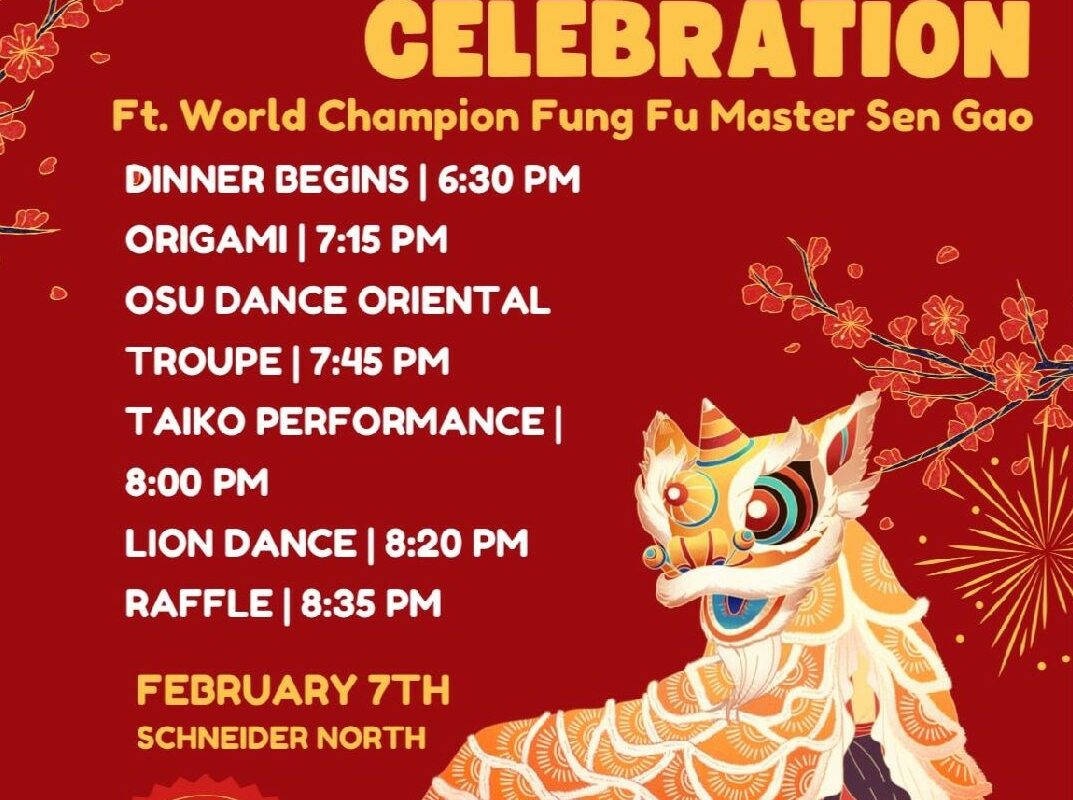Lunar New Year is a time of renewal and celebration among multiple cultures, especially East and South Asian communities, indulging Chinese, Vietnamese and Korean.
The celebration for the new year begins with the first new moon “and spans the first 15 days of the first month of the lunar calendar—until the full moon arrives.” In 2024, Lunar New Year starts on Feb. 10.
The Asian American Alliance on campus will be celebrating numerous traditions during their Lunar New Year Celebration on Feb. 7 in Schneider North, starting at 6:30 p.m.
There will be free food catered from Billy Lee’s Chinese Cuisine, beginner-level origami, traditional dances, a taiko drum performance and raffle baskets. Vice President Catherine Pierce is especially excited to share the balloon dragon and other decorations.
Pierce said what the Asian American Alliance works for, especially with such a big event, is to “educate and have fun… because learning about another culture is really fun.”
Secretary Trinity Wade agreed, saying that the organization’s goal is to “expose everyone else on campus” to different experiences and communities and “make sure that they’re having fun while learning.”
It is their last event for the year, so they’re “going out with a big bang,” thanks to the help of their executive board, the Office of Student and Community and the Office of Diversity and Inclusion, said Pierce.
Students do not have to be Asian-American to join the group. Pierce emphasized “it’s an alliance. No one has to ‘look’ like an Asian-American” or be Asian-American to be involved or attend events.
Chinese astrology is made of 12 animals representing each year in the calendar, with 2024 returning to the dragon. Each animal is associated with different personality traits. The dragon is known for its selflessness.
The story behind the animals starts with a problem: the people have no way of keeping time. The Jade Emperor, who ruled over the Heavenly Court and subsequently all earthly happenings, decreed there would be a cycle of 12 years and animals assigned to each year to make remembering the cycle easier.
In order to select each animal, the emperor held a river-crossing race on his birthday. Every animal wanted to be part of the zodiacs, so the beginning of the race saw all kinds of creatures. However, only the first 12 would be selected.
The winner of the race was the cunning Rat, followed by the honest Ox, brash Tiger, nimble Rabbit, selfless Dragon, sneaky Snake, spontaneous Horse, mild Goat, resourceful Monkey, capable Rooster, playful Dog and pragmatic Pig. The Cat, though details vary from each story iteration, almost never makes it to the race in the first place.
There are numerous traditions people follow to celebrate and generate positive energy for the new year.
A tradition to pass on generational fortune is the exchange of red envelopes filled with money. Gold and red are trademarks of the celebration.
Gold is connected to prosperity, wealth and success. Red signifies happiness and is associated with another Chinese legend about an evil spirit named Nian, who terrorized villages until they realized he was scared of the color red.
Food is also significant. There are dumplings, dumplings and more dumplings to ring in the new year.
The Asian American Alliance executive board will have positions opening up for next year. Students can email a member of the current board or direct message their Instagram at @aaa.capital for more information.
The Lunar New Year Celebration is on Feb. 7 in Schneider North, starting at 6:30 p.m. and students can RSVP on Engage or the CORQ app.


